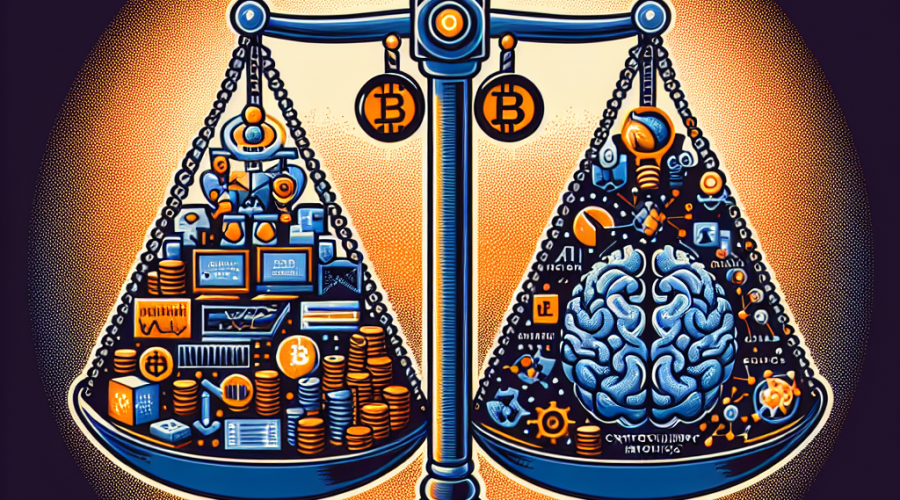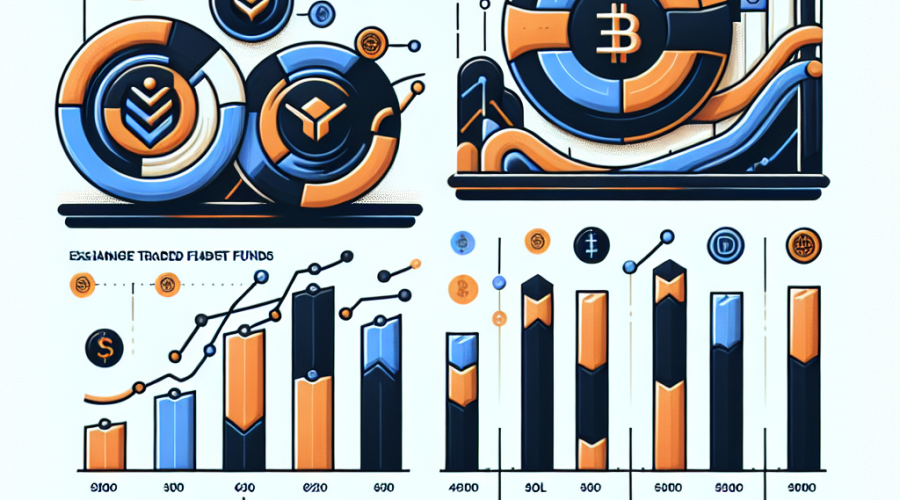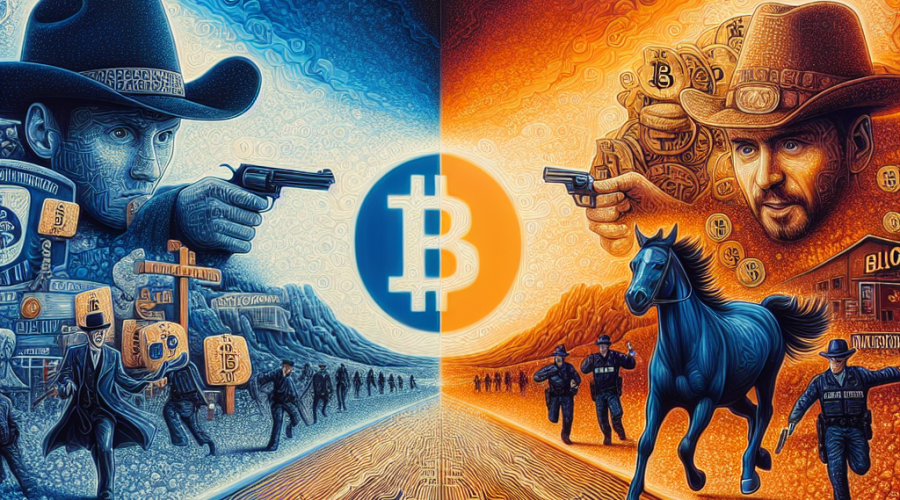EURAU: The Euro-Backed Stablecoin Shaping Institutional Blockchain Finance in Europe
Introduction
In a significant stride toward the integration of traditional finance with emerging blockchain infrastructure, AllUnity has officially launched EURAU, a euro-backed stablecoin, on several major blockchains. This ambitious project is not merely another entry into the growing stablecoin market: it is a joint venture between Deutsche Bank—one of the world’s largest financial institutions—and DWS, a prominent European asset manager. By leveraging Chainlink’s advanced cross-chain technology, AllUnity aims to position EURAU as the cornerstone of institutional digital payments and settlements across a broad landscape of decentralized applications.
AllUnity’s Launch of EURAU: A Technical and Financial Leap
The unveiling of EURAU marks a pivotal moment for the digital asset ecosystem in Europe. Engineered specifically to meet the rigorous demands of institutional finance, EURAU is fully backed by reserves and complies with the European Union’s Markets in Crypto-Assets Regulation (MiCA). This ensures transparency, legal clarity, and safeguards for potential users—qualities critically important to enterprise clients seeking to transition into blockchain-enabled finance.
In terms of financial robustness, Deutsche Bank and DWS bring considerable weight to the table. As of June 2024, Deutsche Bank maintains a balance sheet totaling approximately $1.647 trillion, while DWS manages over 1.01 trillion euros in assets. Such backing not only lends credibility to EURAU as a digital financial instrument but also signals a wider institutional acceptance of blockchain technology within Europe’s finance sector.
Multichain Expansion Through Chainlink’s CCIP Integration
At the heart of EURAU’s technical strategy lies its integration with Chainlink’s Cross-Chain Interoperability Protocol (CCIP). This sophisticated protocol elevates EURAU beyond the confines of a single blockchain, granting it operational versatility across an array of leading networks. Currently, EURAU is accessible on Ethereum, Arbitrum, Base, Optimism, Polygon, and Solana, with plans for future deployment on the Canton Network—a specialist network for institutional financial applications.
The power of CCIP rests in its secure and seamless transfer of tokens, data, and messages between otherwise siloed blockchain networks. Alexander Höptner, CEO of AllUnity, highlighted the significance of this capability, stating that CCIP enables EURAU “to operate seamlessly across multiple blockchains.” This multichain expansion is instrumental for enterprise users who require both redundancy and efficiency in digital assets, as institutions favor stablecoins that can traverse a landscape of interconnected yet independent blockchain platforms.
Chainlink’s President of Banking and Capital Markets, Fernando Vazquez, underscored this foundational shift, noting that “AllUnity is establishing the core infrastructure for the next generation of tokenized finance across Europe.” By functioning as an inter-blockchain communication facilitator, Chainlink greatly simplifies smart contract interoperability, fortifying EURAU’s potential as a settlement and transactional medium for a future-ready digital economy.
Institutional Use Cases: Redefining European Digital Finance
Beyond technical prowess, EURAU’s offering is carefully tailored for a broad swath of institutional use cases. Its design incorporates full reserve backing and MiCA compliance, positioning it as a stable, predictable, and legally sound instrument for large-scale applications. Core use cases include:
- B2B Payments: EURAU provides a swift, blockchain-based alternative to traditional interbank payment systems, reducing settlement times and costs for enterprise-scale transactions.
- Treasury Operations: The stablecoin enables corporate treasury departments to manage liquidity efficiently across multiple blockchain networks, unlocking new potential for on-chain cash management strategies.
- On-Chain Settlements: Institutional investors can settle trades and commitments in real time on decentralized networks, eliminating inefficiencies common in traditional financial market infrastructure.
The regulatory endorsement from the German Federal Financial Supervisory Authority further bolsters these use cases. AllUnity was granted a pivotal license in July, enabling the compliant issuance and circulation of the EURAU stablecoin within the EU’s MiCA framework. This step not only paves the way for mainstream adoption but also offers regulatory clarity for partners and clients.
The Strategic Partnership: Combining Traditional Banking with DeFi
The alliance between Deutsche Bank and DWS exemplifies a broader trend of convergence between legacy financial institutions and the decentralized finance (DeFi) ecosystem. Deutsche Bank’s expertise in banking and cross-border financial operations merges seamlessly with DWS’s competencies in asset management, resulting in a partnership uniquely equipped to navigate both regulated and digital domains.
This collaboration is particularly significant in light of growing institutional demand for tokenized assets—financial instruments that represent real-world assets such as currencies, bonds, or commodities on a blockchain. Rather than working in isolation, financial giants are now investing in technological infrastructure and regulatory compliance to lay the groundwork for future digital markets.
As part of this innovation drive, Deutsche Bank has consistently expanded its digital asset portfolio through ventures like AllUnity. By ensuring that EURAU can interact across multiple blockchains, Deutsche Bank demonstrates its commitment to the integration of blockchain with traditional finance, setting a notable precedent for peer institutions.
Technical Advancements: The Promise of Chainlink’s Cross-Chain Technology
Chainlink’s Cross-Chain Interoperability Protocol (CCIP) is a linchpin in enabling EURAU’s seamless movement across disparate blockchain ecosystems. This technology is especially crucial for the institutional sphere, where liquidity, security, and reliability are non-negotiable requirements.
CCIP operates as a universal messaging and value transfer layer, bridging major blockchain networks and allowing the movement of stablecoins, tokens, and sensitive data. This eliminates the need for cumbersome, risky, and often opaque bridging solutions that have hampered multichain adoption in the past.
By relying on Chainlink, AllUnity ensures that EURAU transactions retain the same standards of security and auditability across supported networks, thereby meeting institutional-grade requirements and fostering greater trust in on-chain processes.
Market Impact and the Future of Euro Stablecoins
The emergence of EURAU is poised to have a ripple effect throughout the European digital finance landscape. As an institutionally backed and EU-compliant stablecoin, EURAU fills a critical gap for euro-denominated digital assets. Until now, a majority of stablecoins have been pegged to the US dollar, leaving the European market underserved.
EURAU’s success could foster broader adoption of blockchain-based solutions in day-to-day banking, trade, and investment functions. It also stands to accelerate the deployment of tokenized financial products, such as on-chain bonds and euro-denominated lending markets.
With regulatory frameworks like MiCA providing legal certainty and stablecoin pioneers such as AllUnity leading infrastructural development, more European banks and asset managers may soon follow in leveraging blockchain for institutional-grade finance. As interoperability protocols continue to mature, the distinction between traditional financial infrastructure and decentralized networks is likely to blur further.
Conclusion: A Milestone for Europe’s Digital Asset Ecosystem
The launch of EURAU signifies far more than just another stablecoin entering the market. By marrying the resources and reputations of Deutsche Bank and DWS with state-of-the-art blockchain protocols, AllUnity sets a benchmark for the next era of institutional-grade digital finance in Europe. Multichain operability, regulatory clarity, and strong financial backing together create a blueprint for secure, efficient, and inclusive digital asset infrastructure.
As EURAU gains traction across Ethereum, Arbitrum, Base, Optimism, Polygon, and Solana—with sights set on further expansion—the groundwork is laid for the tokenization of more traditional financial instruments and the seamless integration of legacy and decentralized systems.
The evolution of stablecoins like EURAU will shape not only the future of European finance but also anchor the migration to a global, interoperable, and digitally native economic system. In this rapidly converging landscape, the institutional embrace of blockchain is no longer speculative—it’s underway, and EURAU stands at its vanguard.


















